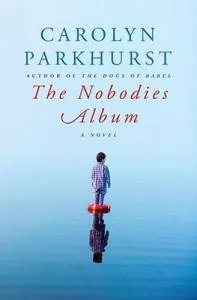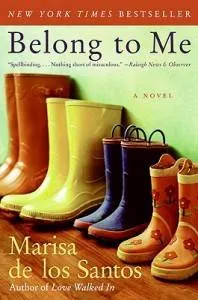On Judging Books By Their Covers…And Other Readerly Biases
Last month, I read a fantastic book that I very nearly passed on because I found its cover completely unappealing. I know. Insert your “don’t judge a book by its cover” reference here. You’ve heard it a thousand times if you’ve heard it once. And you know what? I call shenanigans.
 If readers weren’t supposed to use covers to make decisions about books, publishers wouldn’t spend so much time and money trying to get them right. They wouldn’t change them when the head buyer at Barnes & Noble says she doesn’t like them (true story, happens all the time). They wouldn’t pimp out hardcovers to help them compete against ebooks. And they certainly wouldn’t undertake redesigns to make the paperback and mass market editions of a book have wider commercial appeal than the hardcovers. Publishers know we make snap judgments after passing glances, and they didn’t have to read Blink to figure it out.
Assuming that publishers know more about this than I do, I tend to
If readers weren’t supposed to use covers to make decisions about books, publishers wouldn’t spend so much time and money trying to get them right. They wouldn’t change them when the head buyer at Barnes & Noble says she doesn’t like them (true story, happens all the time). They wouldn’t pimp out hardcovers to help them compete against ebooks. And they certainly wouldn’t undertake redesigns to make the paperback and mass market editions of a book have wider commercial appeal than the hardcovers. Publishers know we make snap judgments after passing glances, and they didn’t have to read Blink to figure it out.
Assuming that publishers know more about this than I do, I tend to take covers at face value. If I don’t know anything about a book except that it has a watery blue cover (see the original cover of The Nobodies Album, the aforementioned book I almost didn’t read), or a child standing alone in a field, or women walking hand-in-hand on the beach, or, worse, a shot of several women’s feet in the sand together), I’m going to pass it over. Same goes for rain boots lined up in a row, though Belong to Me by Marisa de los Santos was *almost* good enough to turn that one around. And if the author’s name appears in GINORMOUS TYPE that takes up almost the entire cover (coughDanBrowncough)? Show’s over.
Call me lazy, but I’ve tried enough books fitting these descriptions to have discovered that they don’t usually work for me. Even when they’re not narrative, covers tell us something, and I’m willing to listen. When I can develop a heuristic to help make a few of the thousand decisions I make each day easier, I do it.
And my readerly biases don’t end with cover tropes. The words “mother-daughter bond” in jacket copy are enough to send me running for the hills. Ditto “the bond between sisters.”
take covers at face value. If I don’t know anything about a book except that it has a watery blue cover (see the original cover of The Nobodies Album, the aforementioned book I almost didn’t read), or a child standing alone in a field, or women walking hand-in-hand on the beach, or, worse, a shot of several women’s feet in the sand together), I’m going to pass it over. Same goes for rain boots lined up in a row, though Belong to Me by Marisa de los Santos was *almost* good enough to turn that one around. And if the author’s name appears in GINORMOUS TYPE that takes up almost the entire cover (coughDanBrowncough)? Show’s over.
Call me lazy, but I’ve tried enough books fitting these descriptions to have discovered that they don’t usually work for me. Even when they’re not narrative, covers tell us something, and I’m willing to listen. When I can develop a heuristic to help make a few of the thousand decisions I make each day easier, I do it.
And my readerly biases don’t end with cover tropes. The words “mother-daughter bond” in jacket copy are enough to send me running for the hills. Ditto “the bond between sisters.”  (Julia Glass’s I See You Everywhere was the exception to that rule, and it’s a good thing I didn’t see the paperback cover before I read it.) A blurb comparing the book to another popular title or telling me it’s “the next fill-in-the-blockbuster-here” is almost always a nail in the coffin, especially if I loved said blockbuster. Working in the book business has even made me suspicious of blurbs from authors whose opinions I want to trust; sometimes knowing how the sausage is made really can ruin the meal.
It takes a sincere recommendation—or six—from fellow readers with similar taste to make me reconsider these snap judgments, and even then (as with The Nobodies Album), it might take me a year or two to get there. As nice as it would be to be able to say I try to encounter each and every potential read based on its contents alone, I don’t think it’s possible. Whether we like it or not, we gather all kinds of information about books before we ever crack the spines. For now, I’m content with the idea that it’s not so bad to have book biases as long as you know what yours are and you’re willing to test them every now and then.
Now it’s your turn to spill: by which cover tropes and jacket copy catchphrases do you judge books?
(Julia Glass’s I See You Everywhere was the exception to that rule, and it’s a good thing I didn’t see the paperback cover before I read it.) A blurb comparing the book to another popular title or telling me it’s “the next fill-in-the-blockbuster-here” is almost always a nail in the coffin, especially if I loved said blockbuster. Working in the book business has even made me suspicious of blurbs from authors whose opinions I want to trust; sometimes knowing how the sausage is made really can ruin the meal.
It takes a sincere recommendation—or six—from fellow readers with similar taste to make me reconsider these snap judgments, and even then (as with The Nobodies Album), it might take me a year or two to get there. As nice as it would be to be able to say I try to encounter each and every potential read based on its contents alone, I don’t think it’s possible. Whether we like it or not, we gather all kinds of information about books before we ever crack the spines. For now, I’m content with the idea that it’s not so bad to have book biases as long as you know what yours are and you’re willing to test them every now and then.
Now it’s your turn to spill: by which cover tropes and jacket copy catchphrases do you judge books?
 If readers weren’t supposed to use covers to make decisions about books, publishers wouldn’t spend so much time and money trying to get them right. They wouldn’t change them when the head buyer at Barnes & Noble says she doesn’t like them (true story, happens all the time). They wouldn’t pimp out hardcovers to help them compete against ebooks. And they certainly wouldn’t undertake redesigns to make the paperback and mass market editions of a book have wider commercial appeal than the hardcovers. Publishers know we make snap judgments after passing glances, and they didn’t have to read Blink to figure it out.
Assuming that publishers know more about this than I do, I tend to
If readers weren’t supposed to use covers to make decisions about books, publishers wouldn’t spend so much time and money trying to get them right. They wouldn’t change them when the head buyer at Barnes & Noble says she doesn’t like them (true story, happens all the time). They wouldn’t pimp out hardcovers to help them compete against ebooks. And they certainly wouldn’t undertake redesigns to make the paperback and mass market editions of a book have wider commercial appeal than the hardcovers. Publishers know we make snap judgments after passing glances, and they didn’t have to read Blink to figure it out.
Assuming that publishers know more about this than I do, I tend to take covers at face value. If I don’t know anything about a book except that it has a watery blue cover (see the original cover of The Nobodies Album, the aforementioned book I almost didn’t read), or a child standing alone in a field, or women walking hand-in-hand on the beach, or, worse, a shot of several women’s feet in the sand together), I’m going to pass it over. Same goes for rain boots lined up in a row, though Belong to Me by Marisa de los Santos was *almost* good enough to turn that one around. And if the author’s name appears in GINORMOUS TYPE that takes up almost the entire cover (coughDanBrowncough)? Show’s over.
Call me lazy, but I’ve tried enough books fitting these descriptions to have discovered that they don’t usually work for me. Even when they’re not narrative, covers tell us something, and I’m willing to listen. When I can develop a heuristic to help make a few of the thousand decisions I make each day easier, I do it.
And my readerly biases don’t end with cover tropes. The words “mother-daughter bond” in jacket copy are enough to send me running for the hills. Ditto “the bond between sisters.”
take covers at face value. If I don’t know anything about a book except that it has a watery blue cover (see the original cover of The Nobodies Album, the aforementioned book I almost didn’t read), or a child standing alone in a field, or women walking hand-in-hand on the beach, or, worse, a shot of several women’s feet in the sand together), I’m going to pass it over. Same goes for rain boots lined up in a row, though Belong to Me by Marisa de los Santos was *almost* good enough to turn that one around. And if the author’s name appears in GINORMOUS TYPE that takes up almost the entire cover (coughDanBrowncough)? Show’s over.
Call me lazy, but I’ve tried enough books fitting these descriptions to have discovered that they don’t usually work for me. Even when they’re not narrative, covers tell us something, and I’m willing to listen. When I can develop a heuristic to help make a few of the thousand decisions I make each day easier, I do it.
And my readerly biases don’t end with cover tropes. The words “mother-daughter bond” in jacket copy are enough to send me running for the hills. Ditto “the bond between sisters.”  (Julia Glass’s I See You Everywhere was the exception to that rule, and it’s a good thing I didn’t see the paperback cover before I read it.) A blurb comparing the book to another popular title or telling me it’s “the next fill-in-the-blockbuster-here” is almost always a nail in the coffin, especially if I loved said blockbuster. Working in the book business has even made me suspicious of blurbs from authors whose opinions I want to trust; sometimes knowing how the sausage is made really can ruin the meal.
It takes a sincere recommendation—or six—from fellow readers with similar taste to make me reconsider these snap judgments, and even then (as with The Nobodies Album), it might take me a year or two to get there. As nice as it would be to be able to say I try to encounter each and every potential read based on its contents alone, I don’t think it’s possible. Whether we like it or not, we gather all kinds of information about books before we ever crack the spines. For now, I’m content with the idea that it’s not so bad to have book biases as long as you know what yours are and you’re willing to test them every now and then.
Now it’s your turn to spill: by which cover tropes and jacket copy catchphrases do you judge books?
(Julia Glass’s I See You Everywhere was the exception to that rule, and it’s a good thing I didn’t see the paperback cover before I read it.) A blurb comparing the book to another popular title or telling me it’s “the next fill-in-the-blockbuster-here” is almost always a nail in the coffin, especially if I loved said blockbuster. Working in the book business has even made me suspicious of blurbs from authors whose opinions I want to trust; sometimes knowing how the sausage is made really can ruin the meal.
It takes a sincere recommendation—or six—from fellow readers with similar taste to make me reconsider these snap judgments, and even then (as with The Nobodies Album), it might take me a year or two to get there. As nice as it would be to be able to say I try to encounter each and every potential read based on its contents alone, I don’t think it’s possible. Whether we like it or not, we gather all kinds of information about books before we ever crack the spines. For now, I’m content with the idea that it’s not so bad to have book biases as long as you know what yours are and you’re willing to test them every now and then.
Now it’s your turn to spill: by which cover tropes and jacket copy catchphrases do you judge books?








